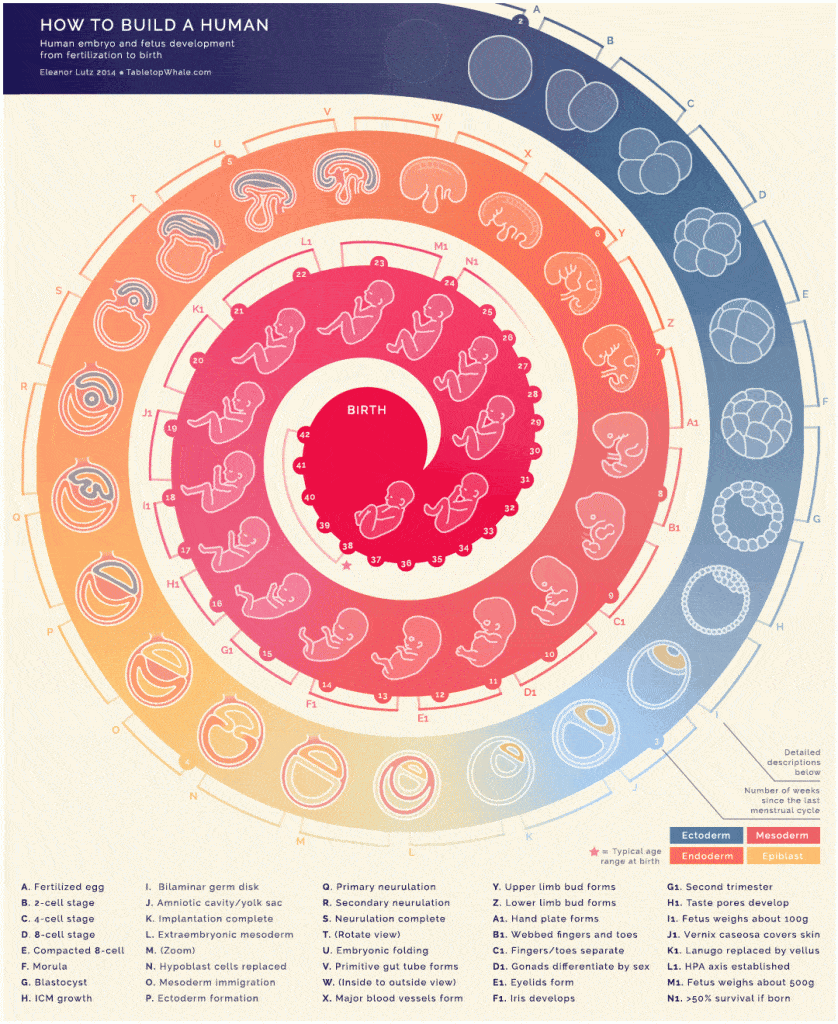It all starts with a lucky spermatozoon and one egg. When the two merge, a genetically unique entity is formed shortly thereafter, called a zygote which has half of its DNA from the sperm, and the other half from the egg. The zygote first divides into two identical cells, called blastomeres. Five days after conception, the grouping of cells are now called a blastocyst. A cavity appears in its center. It has an inner group of cells which will become the embryo and later the fetus, and still later the newborn. In between, there’s a lot of things happening and this fantastic animated infographic designed by Eleanor Lutz does a great job summing things up visually.
“Developmental biology was one of my favorite classes in college. I wanted to translate the biology into a GIF so that people could intuitively understand some of the aspects of development without having to read a lot of text,” Lutz told ZME Science.
“The spiral model was actually inspired by the GIF work of Nicolas Fong. He does a lot of really awesome spiral animations and I wanted to try the technique in my own work,” she added.
You can visit Lutz’s website to find out other amazing infographics, like the Planet Earth Control Deck or the Animated Guide to Breathing.







